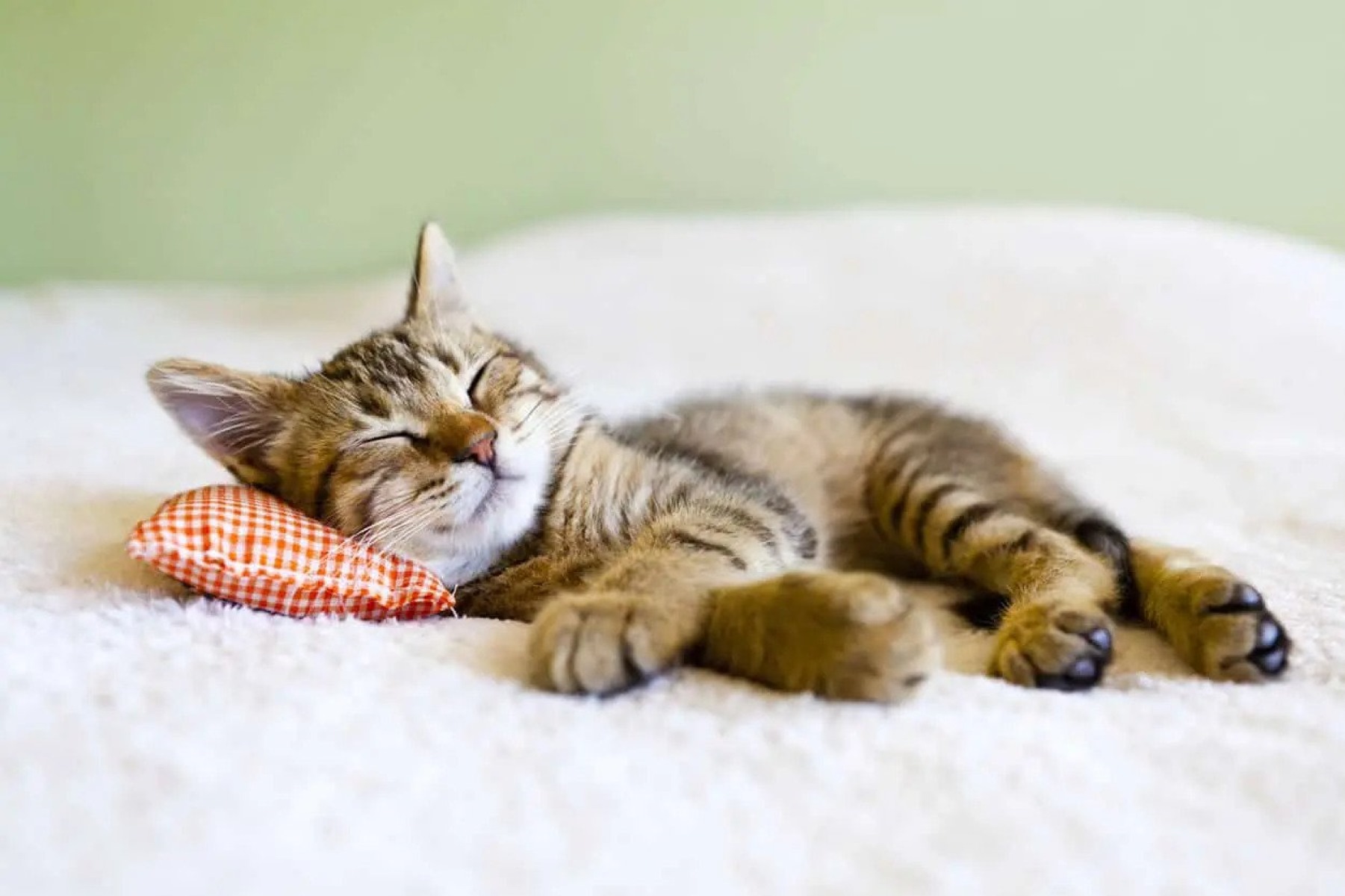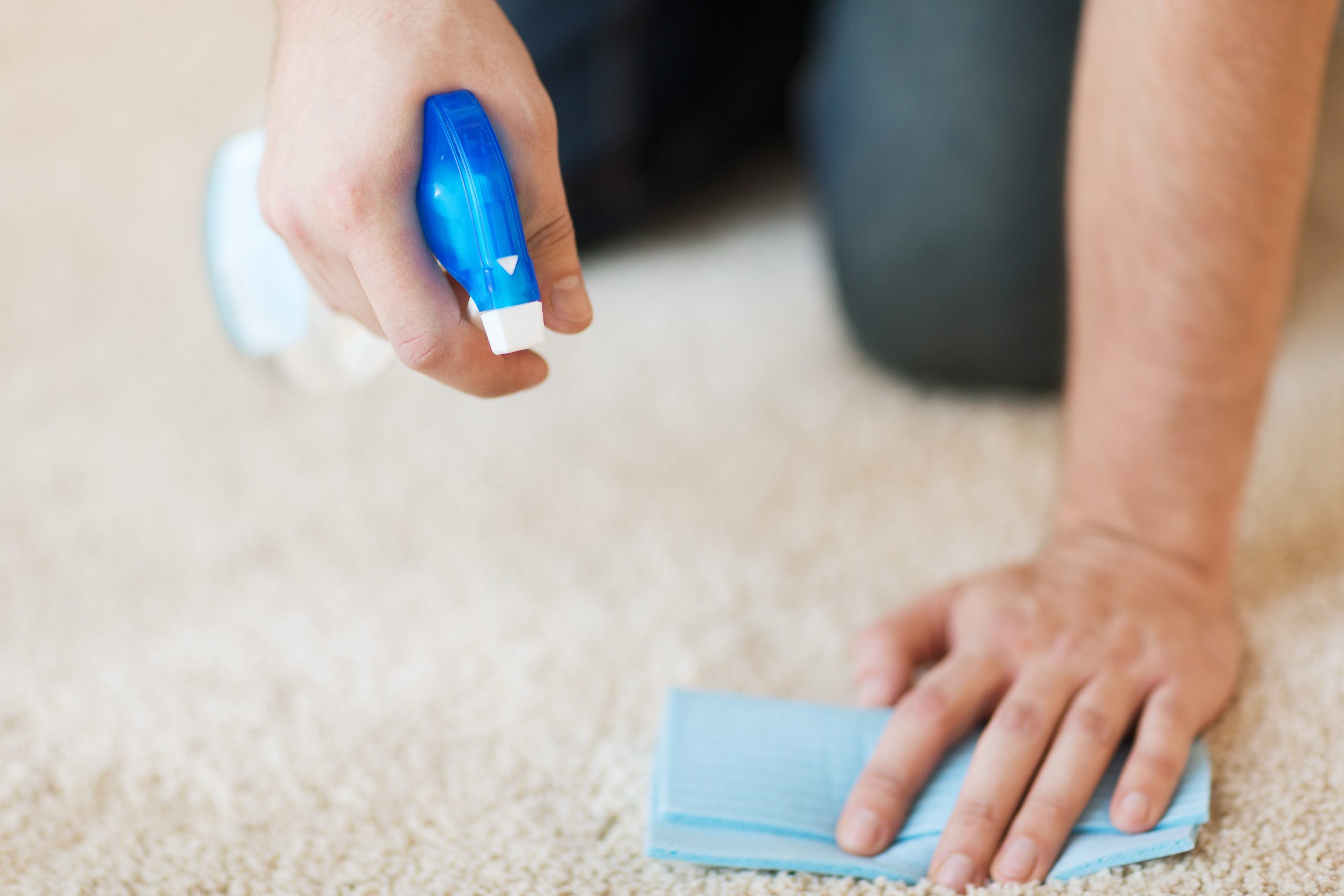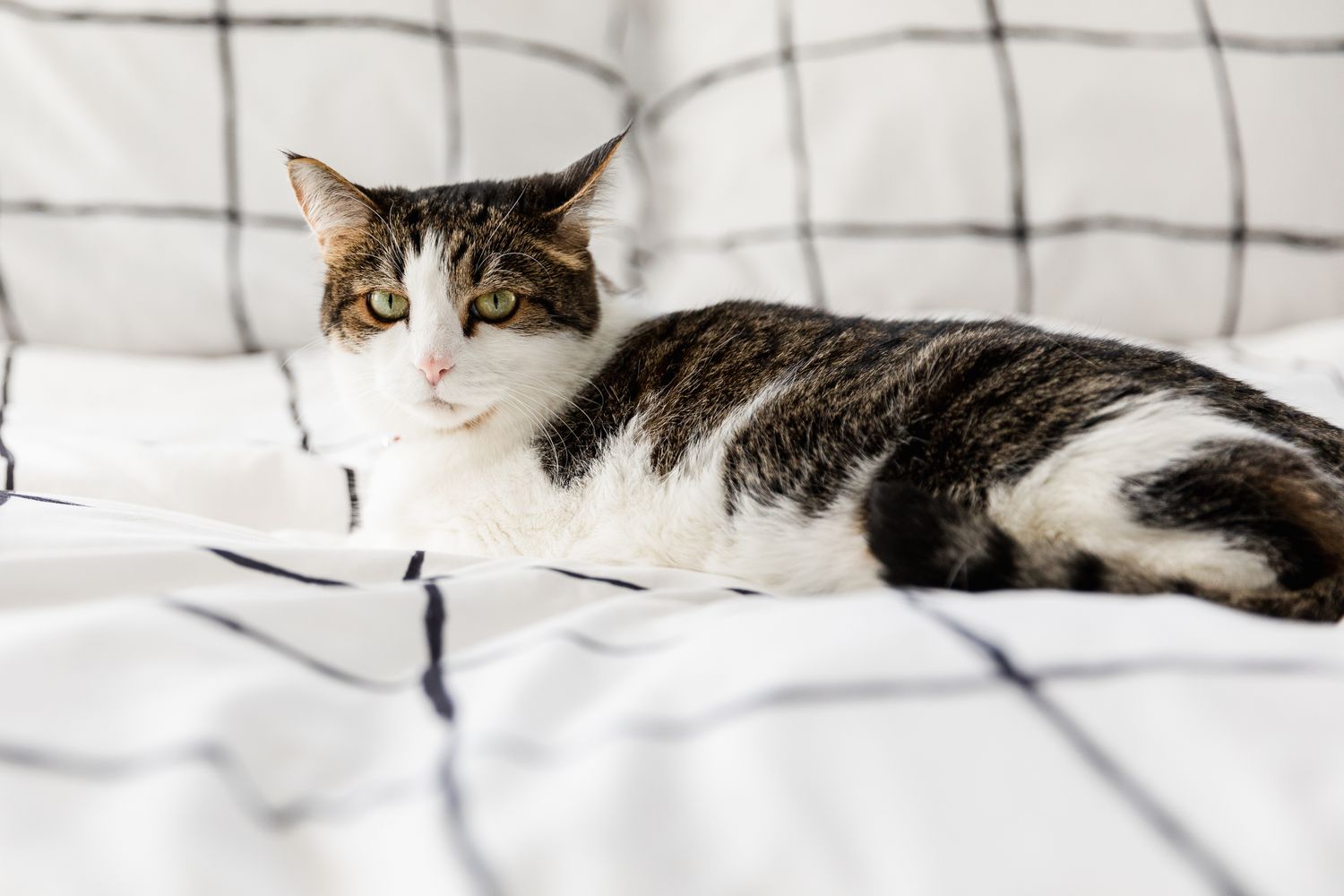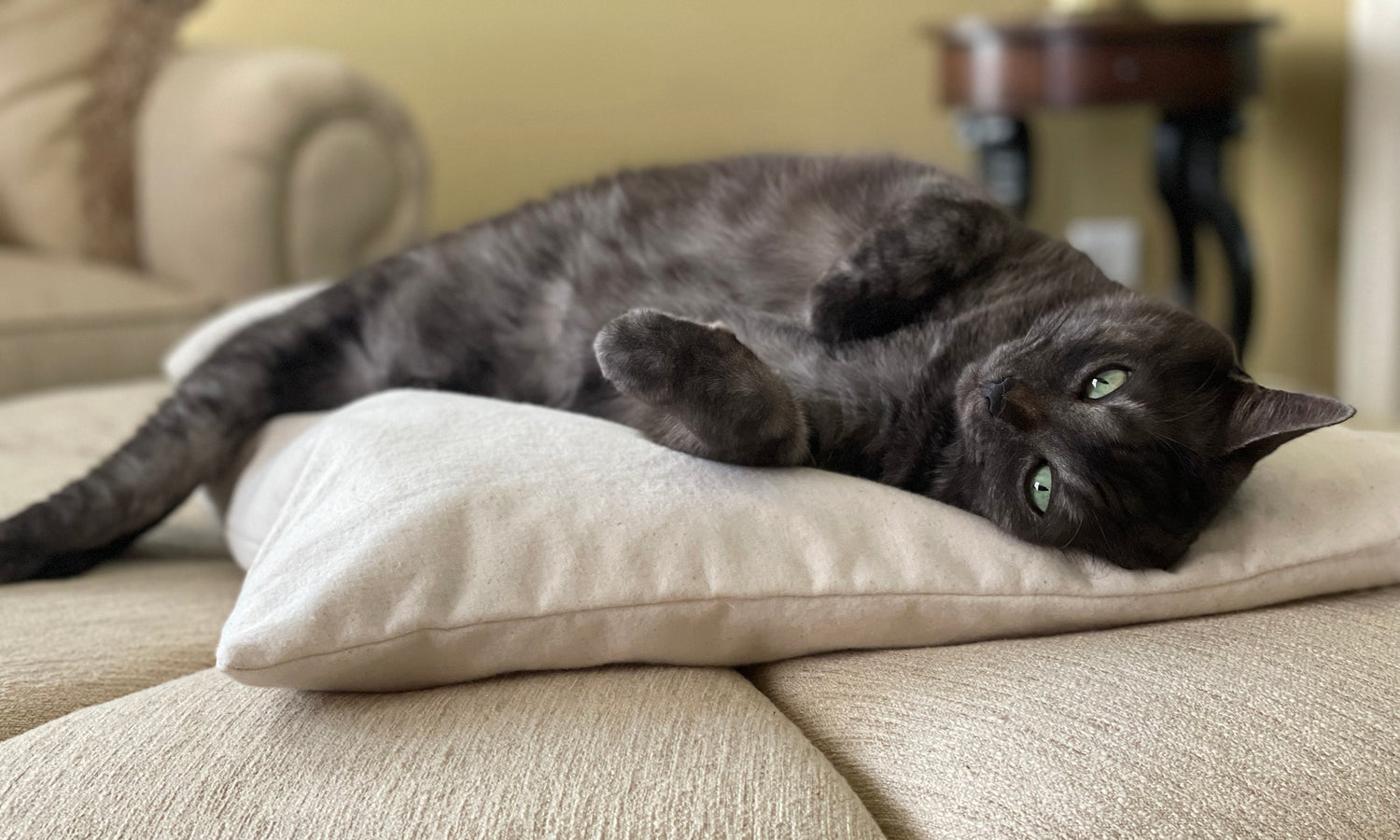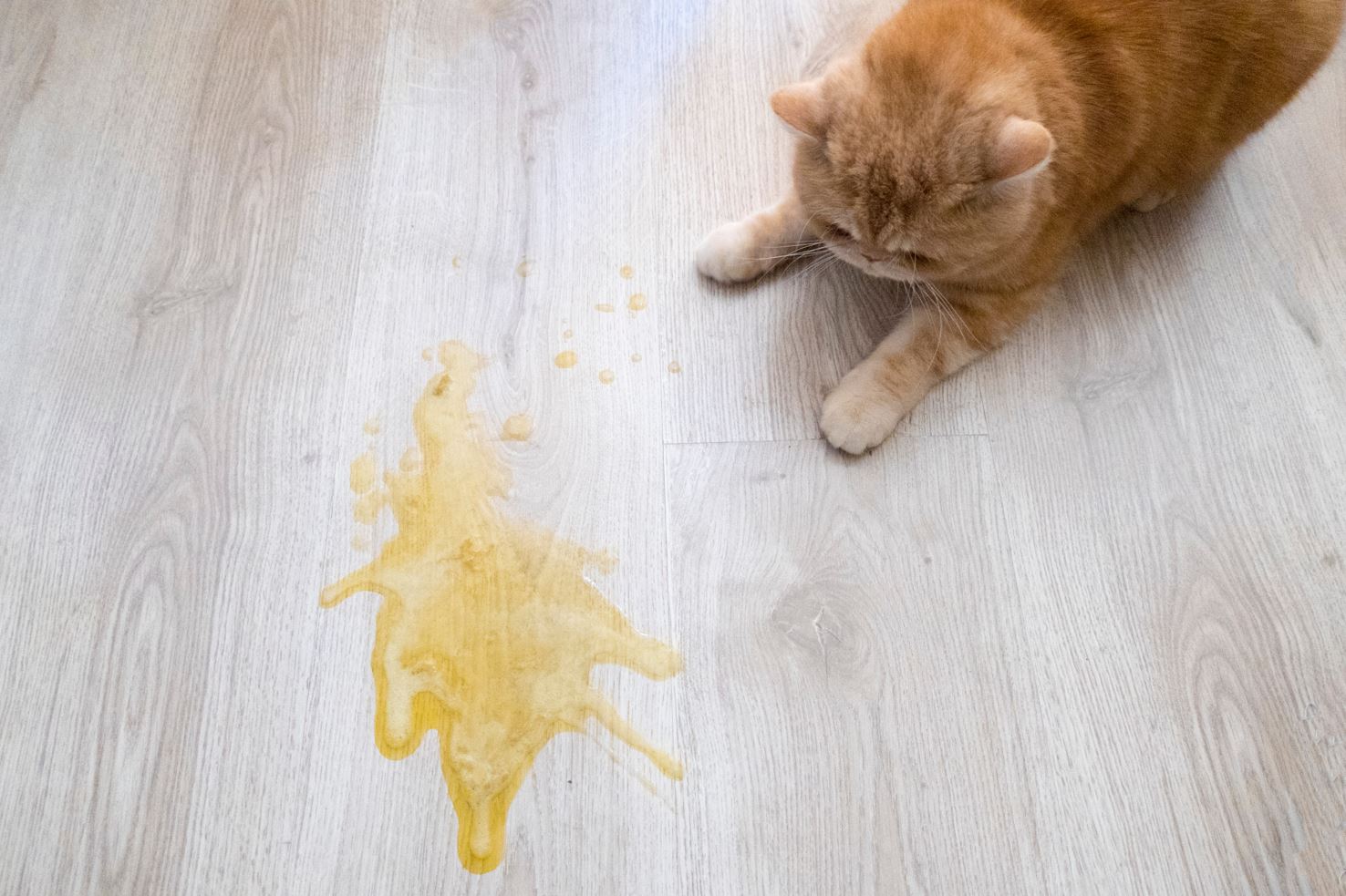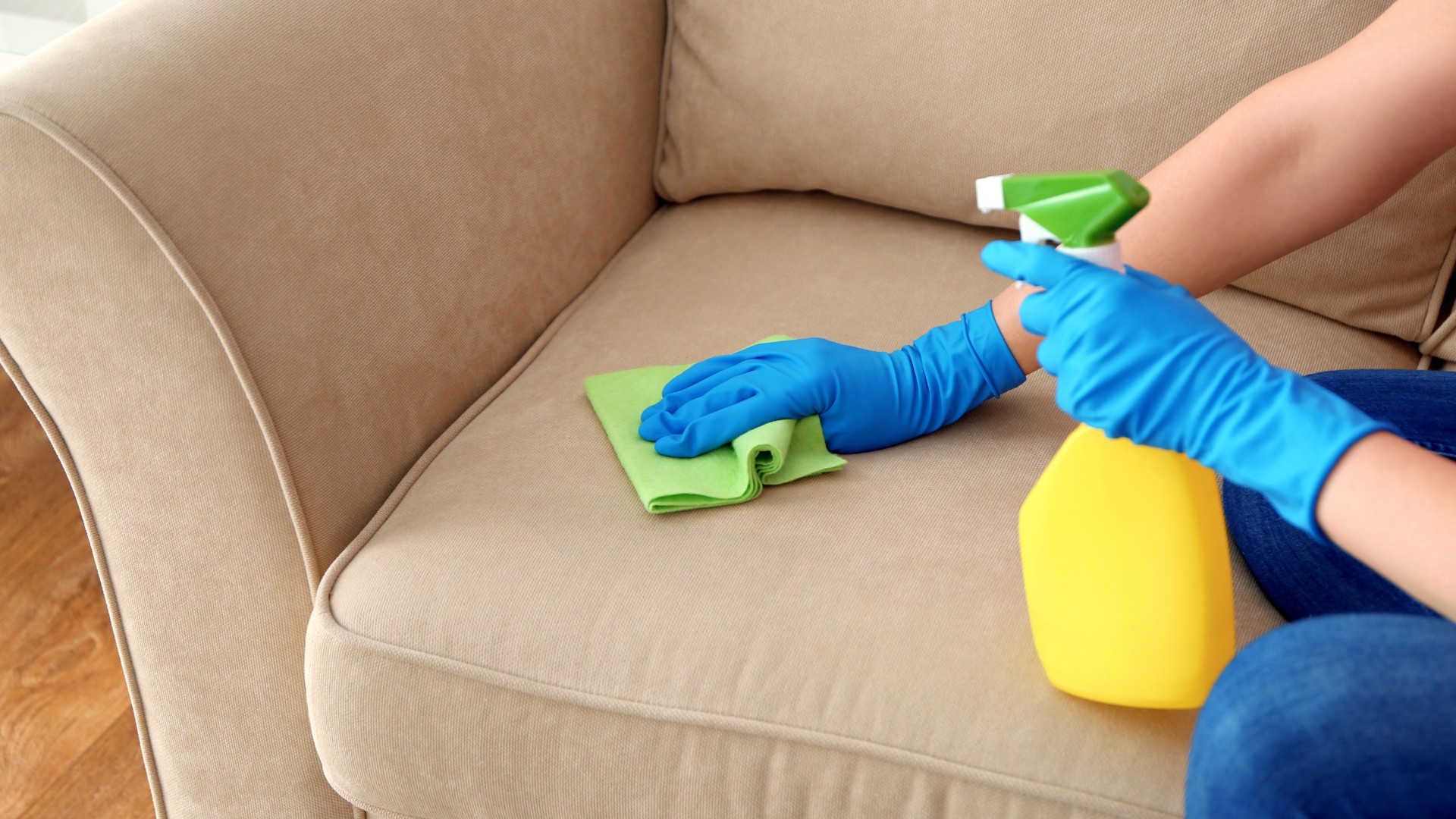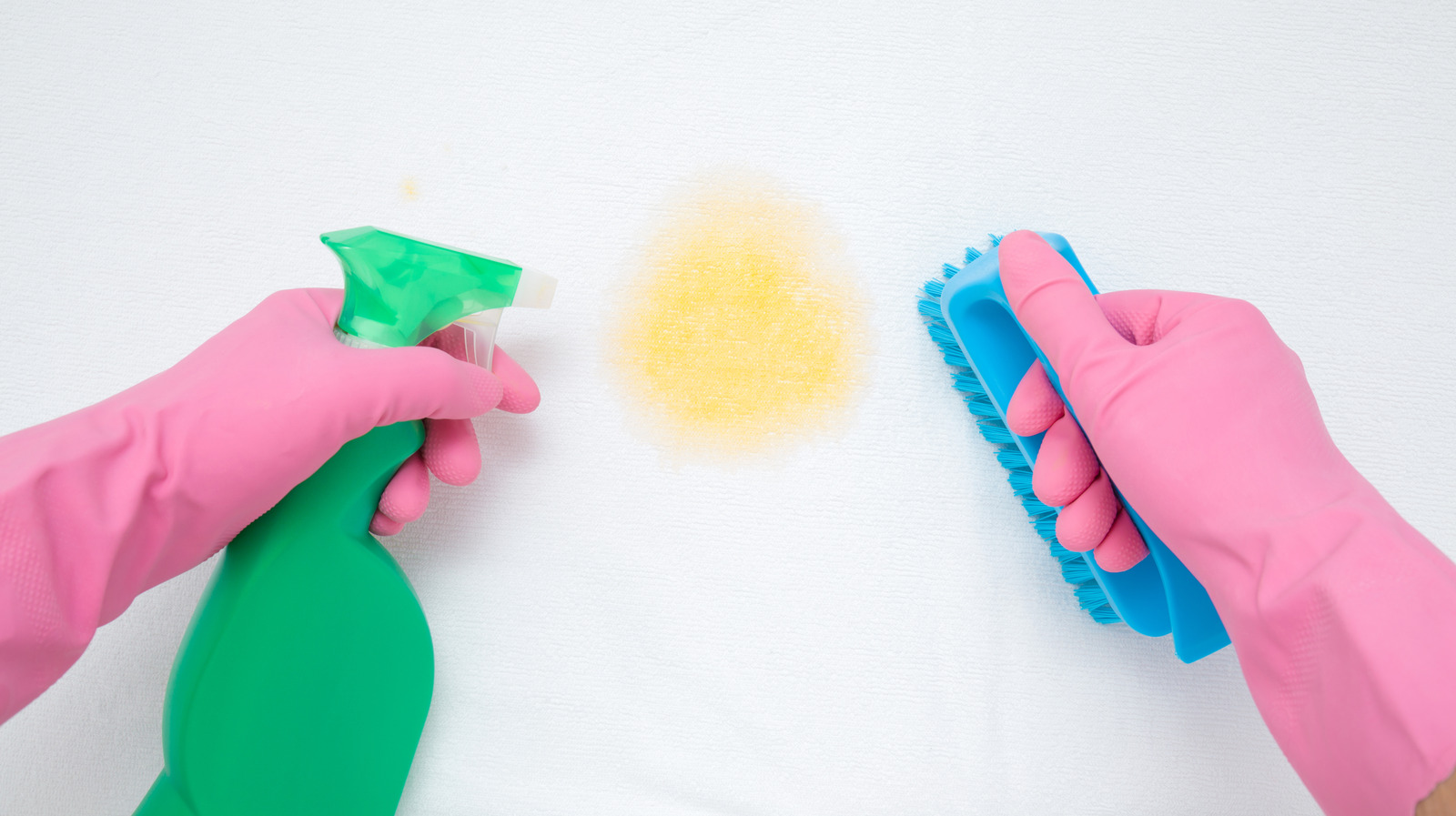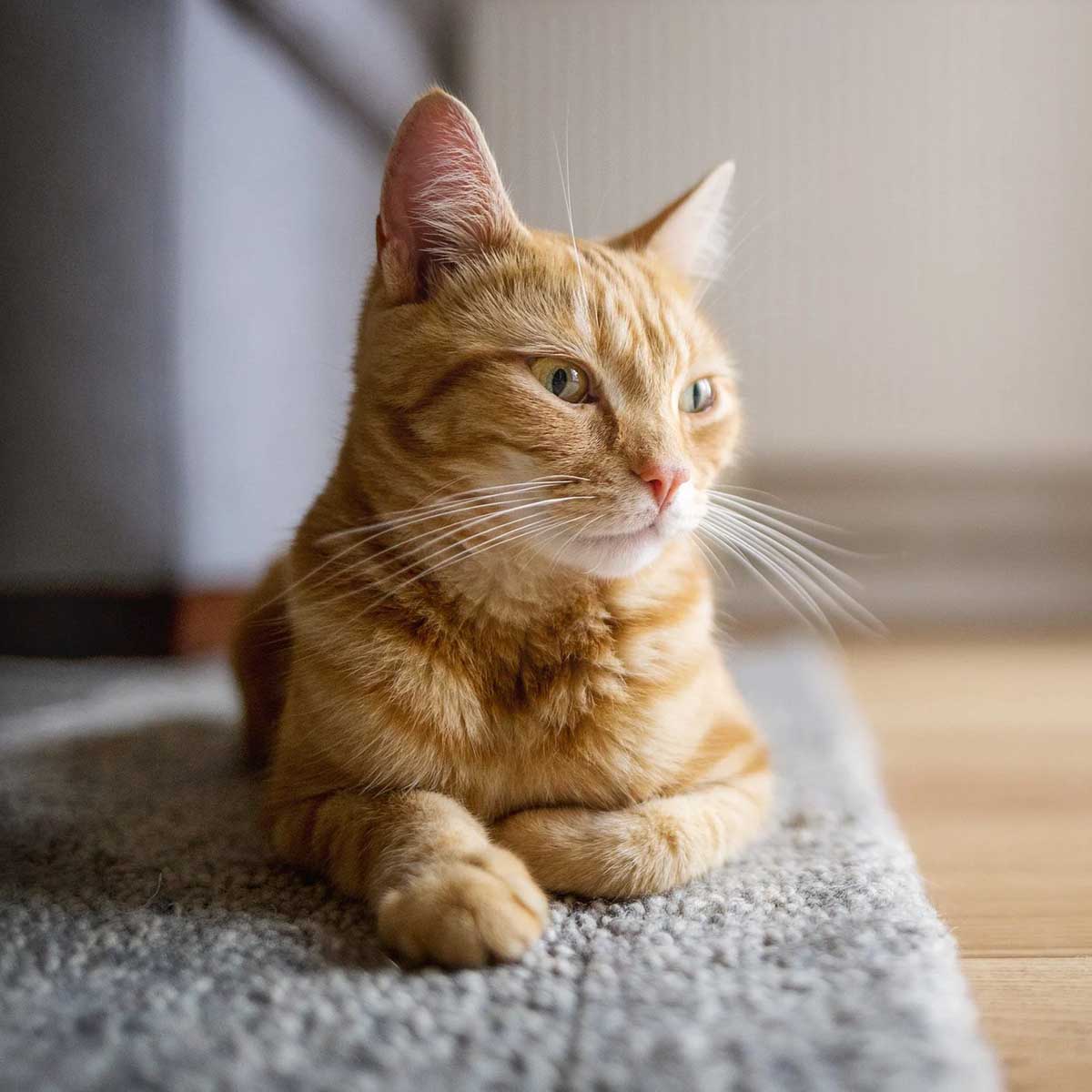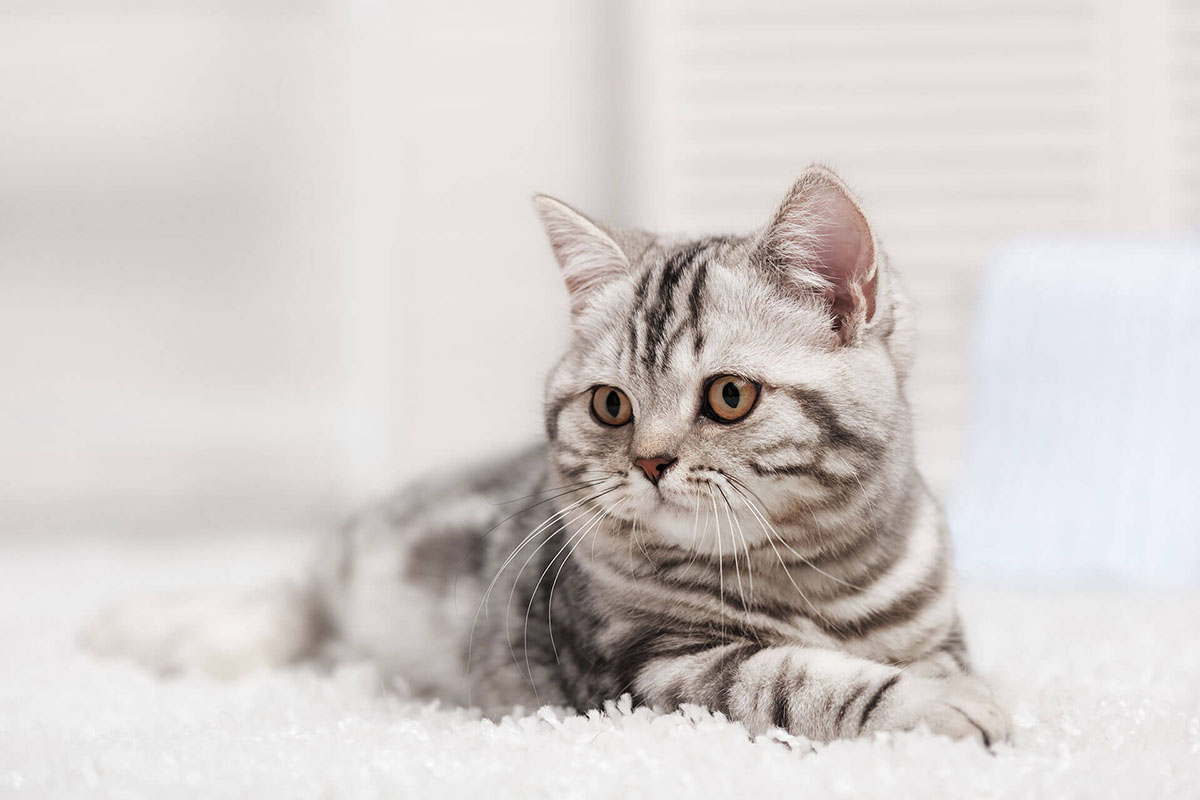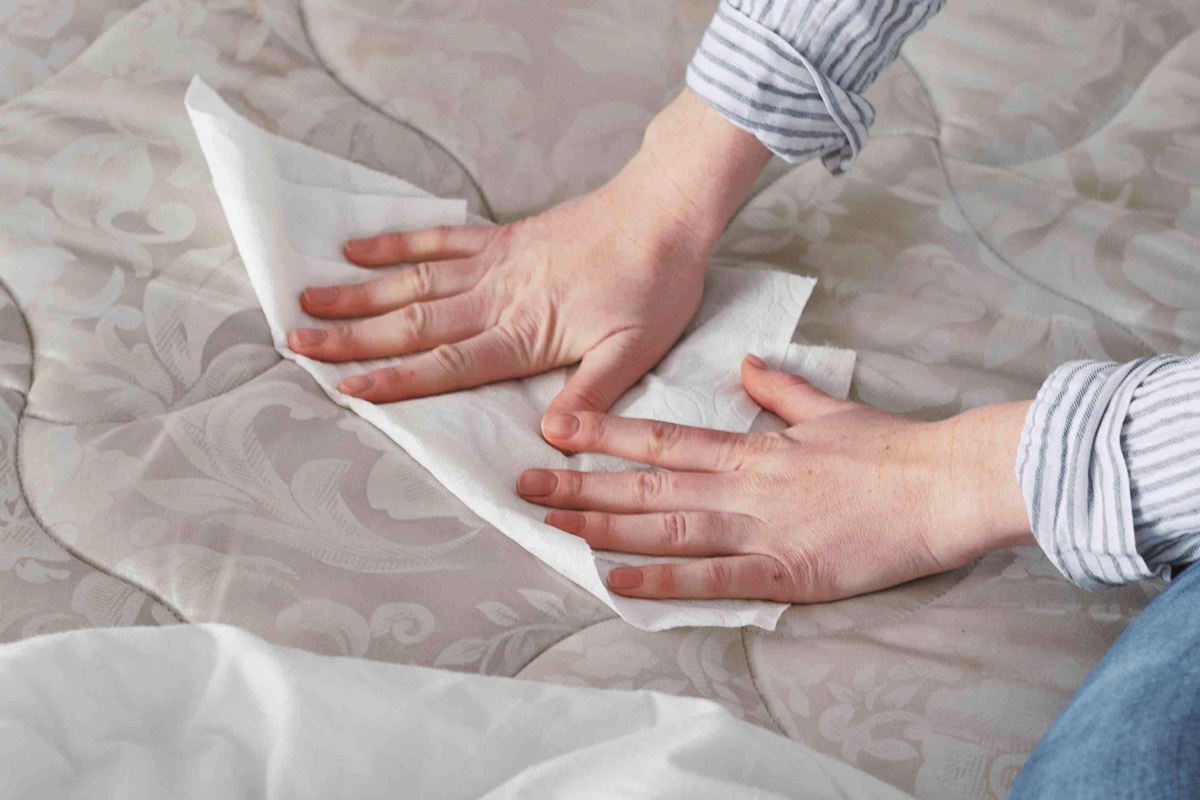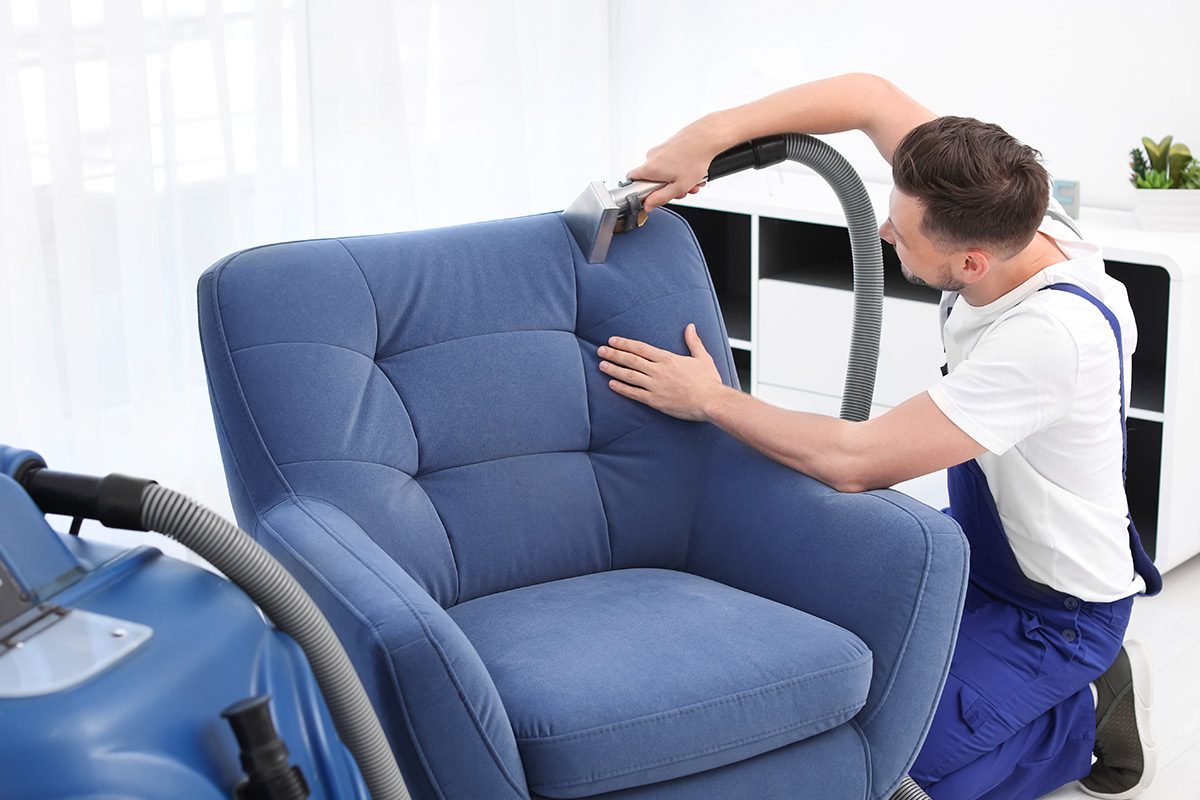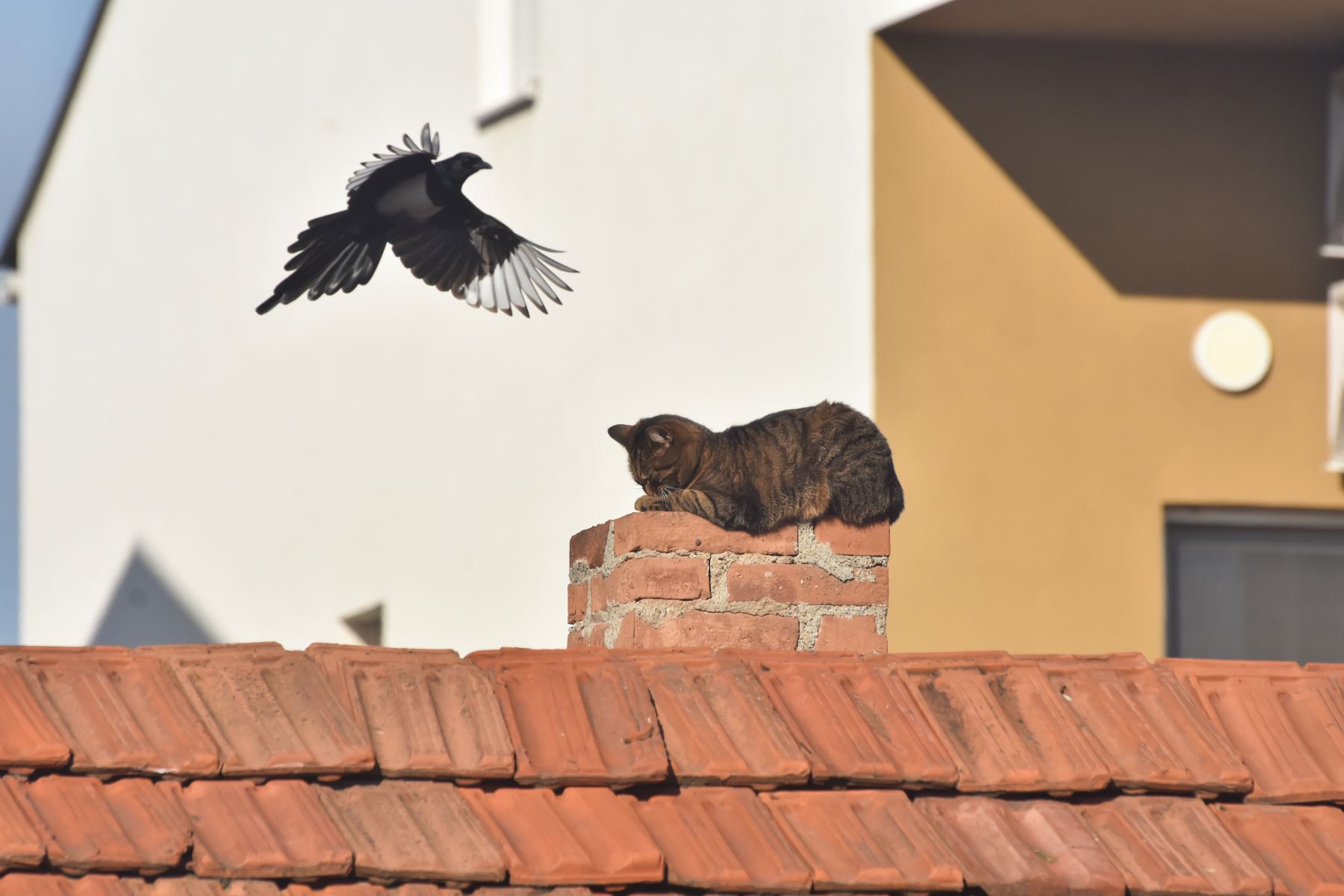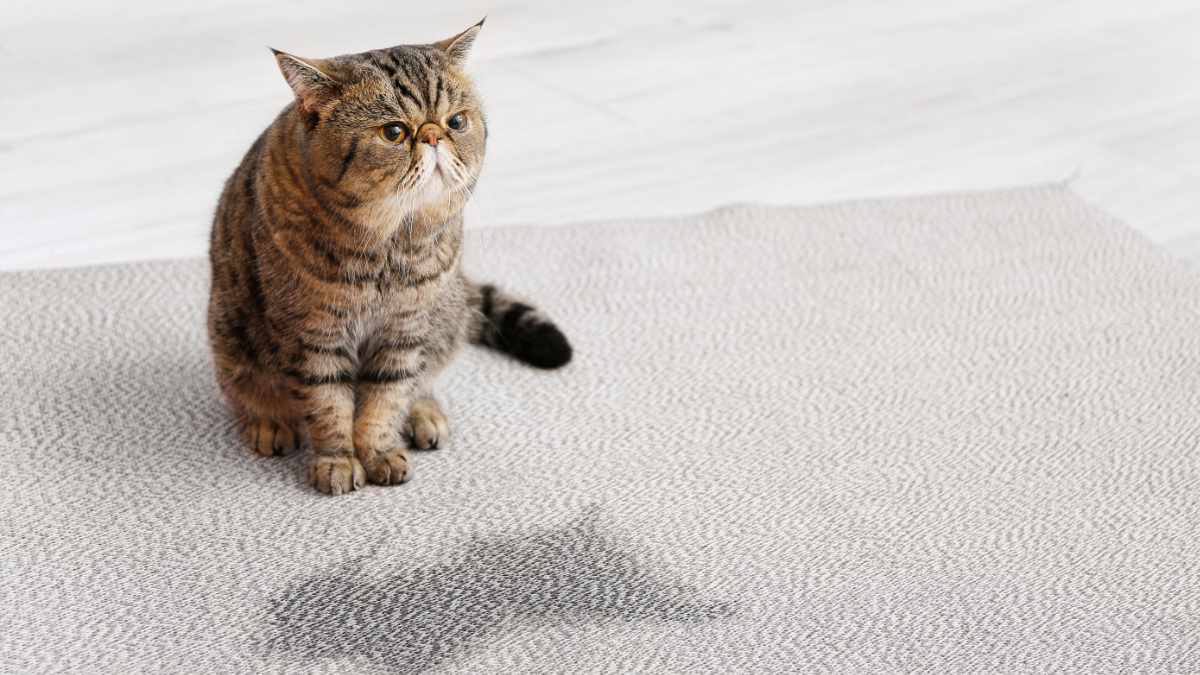

Articles
How To Get Cat Pee Out Of A Carpet
Modified: October 20, 2024
Looking for articles on how to get cat pee out of a carpet? Discover effective tips and techniques to remove the odor and stains from your carpet.
(Many of the links in this article redirect to a specific reviewed product. Your purchase of these products through affiliate links helps to generate commission for Storables.com, at no extra cost. Learn more)
Introduction
Welcome to our comprehensive guide on how to get cat pee out of a carpet. If you’re a cat owner, chances are you’ve encountered the unpleasant surprise of finding cat urine on your beloved carpet. Dealing with this issue can be frustrating and, if not addressed properly, can lead to long-lasting stains and lingering odor. However, with the right knowledge and techniques, you can effectively remove cat urine stains and eliminate the odor from your carpet.
Before we dive into the step-by-step process of removing cat pee from your carpet, it’s important to understand why cats have a tendency to urinate outside of their litter boxes. Cats might urinate on carpets for various reasons, including medical issues, behavioral problems, or simply because they haven’t been trained properly. It’s crucial to rule out any underlying health conditions before addressing the issue.
To successfully tackle cat urine stains and odor, we will be discussing a four-step approach. First, we’ll cover how to clean up fresh cat urine to prevent it from seeping deeper into the carpet fibers. Then, we’ll move on to removing dried cat urine stains that have been left untreated for some time. Next, we’ll address the issue of lingering cat urine odor and how to eliminate it effectively. Finally, we’ll provide insights on preventing future accidents and maintaining a clean and fresh-smelling carpet.
It’s important to note that this guide is intended for carpets that are not delicate or require professional cleaning. If you have a valuable or delicate carpet, it’s recommended to seek professional assistance to prevent any damage during the cleaning process. With that said, let’s get started with the first step: cleaning up fresh cat urine from your carpet.
Key Takeaways:
- Act promptly when dealing with fresh cat urine on your carpet to prevent long-lasting stains and odors. Use an enzyme-based cleaner and ensure thorough drying for effective cleanup.
- Understanding the reasons behind cat urine accidents is crucial. Address medical, behavioral, and litter box issues to prevent future incidents and maintain a clean, odor-free environment for your cat.
Read more: How To Get Pee Out Of The Carpet
Understanding the issue: Why do cats pee on carpets?
If you’ve ever wondered why your cat chooses to pee on your carpet instead of using their litter box, you’re not alone. Cats peeing on carpets can be a frustrating and perplexing problem for many cat owners. To effectively address this issue, it’s important to understand some of the common reasons why cats exhibit this behavior.
1. Medical issues: The first step in addressing a cat’s inappropriate urination is ruling out any underlying medical conditions. Cats might experience urinary tract infections, bladder stones, or other ailments that can cause discomfort or pain while urinating. If your cat’s behavior suddenly changes, it’s essential to consult a veterinarian to rule out any medical issues.
2. Behavioral problems: Cats can develop behavioral issues that lead to inappropriate urination. Stress, anxiety, or changes in the environment can trigger this behavior. Cats might pee on carpets as a way to mark their territory or signal their distress. It’s important to identify any changes in your cat’s environment or routine that might be causing stress and try to address them effectively.
3. Litter box problems: One of the most common reasons why cats pee on carpets is due to litter box issues. Cats are inherently clean animals and prefer a clean litter box. If the litter box is not clean enough for their liking, they might opt to pee elsewhere. Additionally, cats can develop aversions to the type of litter, size, or location of their litter box. Ensuring that your cat’s litter box is clean, accessible, and suitable to their preferences is crucial in preventing carpet accidents.
4. Territorial disputes: Cats are territorial creatures, and conflicts with other cats, whether indoors or outdoors, can lead to carpet peeing. When a cat feels threatened by another cat’s presence, they might mark their territory by urinating on carpets. If you have multiple cats, it’s essential to provide enough resources, such as litter boxes, food bowls, and resting areas, to reduce territorial disputes.
Now that we have a better understanding of some of the reasons why cats pee on carpets, it’s time to move on to the practical steps of removing fresh cat urine stains from your carpet. Properly addressing this issue not only helps maintain a clean home but also improves your cat’s overall wellbeing and happiness.
Step 1: Cleaning up fresh cat urine
When you discover fresh cat urine on your carpet, it’s crucial to act quickly to prevent it from seeping deeper into the carpet fibers and causing long-lasting stains. Follow these steps to effectively clean up fresh cat urine:
- Act promptly: As soon as you notice the cat urine, grab a few paper towels or clean rags and press them gently onto the wet area to soak up as much urine as possible. Avoid rubbing the urine as it can spread the stain and push it deeper into the carpet.
- Use an enzyme-based cleaner: To effectively remove the cat urine odor and discourage your cat from peeing in the same spot again, choose an enzyme-based cleaner specifically designed for pet urine. Enzyme cleaners contain bacteria that feed on the urine and break it down, eliminating the odor. Follow the instructions on the cleaner and thoroughly saturate the affected area. Allow the cleaner to sit for the recommended amount of time to work its magic.
- Blot and rinse: After the enzyme cleaner has had time to work, blot the area with clean, dry towels to absorb excess moisture. Rinse the area with clean water and blot again to remove any remaining cleaning solution. This step is important to prevent any residue from attracting dirt or causing discoloration.
- Dry thoroughly: It’s essential to ensure that the carpet is thoroughly dried after cleaning to prevent mold or mildew growth. Use a fan or open windows to improve airflow and expedite the drying process. Avoid walking on the carpet until it is completely dry.
Remember, the key to effectively cleaning up fresh cat urine is to act quickly and use an enzyme-based cleaner. By following these steps, you’ll be able to remove the urine and minimize the chances of it leaving a lasting stain or odor on your carpet.
Now that you’ve successfully cleaned up the fresh cat urine, it’s time to move on to step two: tackling dried cat urine stains that have been left untreated for a longer period of time.
Step 2: Removing dried cat urine stains
If you’ve discovered dried cat urine stains on your carpet, don’t panic. While dried stains can be more challenging to remove, it’s still possible to eliminate them effectively with the right techniques. Follow these steps to remove dried cat urine stains from your carpet:
- Prepare a cleaning solution: Create a mixture of equal parts white vinegar and warm water in a spray bottle. Vinegar is a natural cleaning agent that helps break down the dried urine and eliminate the odor.
- Saturate the stained area: Spray the vinegar and water solution generously on the dried urine stain. Make sure to saturate the stain thoroughly and allow the solution to penetrate the fibers.
- Blot the area: After allowing the cleaning solution to sit for a few minutes, use a clean cloth or paper towels to blot the area. Apply gentle pressure to absorb the moisture and lift the stain. Repeat this process until you no longer see any visible traces of the stain.
- Rinse with clean water: Once you’ve successfully removed the stain, rinse the area with clean water to remove any remaining vinegar solution. Blot the area again to remove excess moisture.
- Dry thoroughly: Ensure that the carpet is completely dry before walking on it or placing any furniture back on it. Use a fan or open windows to aid in the drying process and prevent any mold or mildew growth.
By following these steps and using the vinegar and water solution, you can effectively break down and remove dried cat urine stains from your carpet. However, if the stains persist or the odor lingers, it might be necessary to use a specialized pet stain remover or consult a professional carpet cleaning service.
Now that you’ve successfully tackled both fresh and dried cat urine stains, it’s time to address the next crucial step: eliminating the lingering odor that can be associated with cat urine.
Blot the area with paper towels to soak up as much urine as possible. Then, mix equal parts water and white vinegar, and pour it over the affected area. Let it sit for a few minutes, then blot with more paper towels. Repeat until the odor is gone.
Step 3: Dealing with cat urine odor
Even if you’ve successfully removed the visible stains, the lingering odor of cat urine can be quite unpleasant. To effectively eliminate the odor and ensure your carpet smells fresh again, follow these steps:
- Identify the affected areas: Use your sense of smell to locate any areas where the cat urine odor is still present. This might include areas where the urine has seeped into the carpet padding or underlying layers.
- Apply an odor neutralizer: Look for a pet-specific odor neutralizer or enzymatic cleaner designed to eliminate pet urine odors. These products work by breaking down the odor-causing molecules at the microscopic level. Follow the instructions on the product and generously apply it to the affected areas, making sure to saturate the carpet fibers.
- Allow time to work: After applying the odor neutralizer, give it time to work its magic. Depending on the product, it might need to be left on the carpet for several hours or overnight. This allows it to penetrate deep into the carpet fibers and eliminate the odor-causing molecules.
- Vacuum the carpet: Once the odor neutralizer has had sufficient time to work, thoroughly vacuum the carpet to remove any residue and remaining odor particles. Make sure to use a vacuum cleaner with a strong suction power and consider using a vacuum cleaner with a HEPA (High-Efficiency Particulate Air) filter to capture any fine particles that might cause allergies or asthma.
- Repeat if necessary: In some cases, particularly with severe urine odor, you might need to repeat the process to completely eliminate the odor. Be patient and persistent, as it might take several attempts to completely get rid of the smell.
By following these steps and using an effective odor neutralizer or enzymatic cleaner, you can successfully eliminate the unpleasant cat urine odor from your carpet. Remember, thoroughly treating the affected areas and allowing the products to work is essential for the best results.
Now that you’ve addressed the cat urine stains and odor, it’s time to move on to the final step: preventing future accidents and maintaining a clean and fresh-smelling carpet.
Read more: How To Clean Cat Pee Out Of Carpet
Step 4: Preventing future accidents
Now that you’ve successfully cleaned up cat urine stains and eliminated the odor from your carpet, it’s important to take proactive measures to prevent future accidents. Here are some tips to help you prevent your cat from peeing on the carpet:
- Maintain a clean litter box: Ensure that your cat’s litter box is kept clean and scooped daily. Cats prefer a clean bathroom area and may avoid using a dirty litter box, leading to accidents on the carpet.
- Provide multiple litter boxes: If you have multiple cats in your household, provide a sufficient number of litter boxes. The general rule is one litter box per cat, plus an additional one. This will help prevent territorial disputes and ensure that each cat has easy access to a litter box.
- Choose the right litter: Experiment with different types of litter to find the one your cat prefers. Some cats have preferences regarding the texture, scent, or type of litter. By finding the litter that your cat prefers, you can encourage them to use the litter box consistently.
- Place litter boxes strategically: Position litter boxes in quiet and easily accessible areas of your home. Avoid placing them near noisy appliances or high-traffic areas that might make your cat feel uncomfortable or threatened.
- Clean accidents promptly: If your cat has an accident outside the litter box, clean it up promptly to prevent them from returning to the same spot. Use the same cleaning process outlined in the previous steps to remove any urine stains and odors effectively.
- Address any behavioral issues: If your cat’s inappropriate urination persists or worsens despite your best efforts, it’s essential to consult with a veterinarian or an animal behaviorist. They can help identify any underlying behavioral issues and provide guidance on how to address them.
By implementing these preventive measures, you can significantly reduce the chances of future accidents on your carpet. Consistency, cleanliness, and understanding your cat’s preferences are key to maintaining a clean and odor-free environment.
With these four steps, you now have the knowledge and techniques to effectively clean up cat urine stains, eliminate odors, and prevent future accidents on your carpet. Remember to be patient and persistent, as it might take some time and effort to resolve the issue completely.
By creating a clean and comfortable environment for your cat, you can ensure their wellbeing and foster a harmonious coexistence in your home.
Conclusion
Dealing with cat urine on your carpet can be a frustrating and unpleasant experience. However, with the right knowledge and techniques, you can effectively clean up cat urine stains, eliminate odors, and prevent future accidents. By following the four steps outlined in this guide, you can restore your carpet to its clean and fresh state.
Understanding the reasons why cats pee on carpets is crucial in addressing the issue effectively. Whether it’s due to medical problems, behavioral issues, or litter box problems, it’s important to identify the underlying cause and take appropriate action.
In Step 1, we discussed the importance of cleaning up fresh cat urine promptly to prevent it from seeping deeper into the carpet fibers. Using an enzyme-based cleaner, blotting, and thorough drying were emphasized to ensure the best results.
In Step 2, we addressed the challenge of removing dried cat urine stains. By preparing a vinegar and water solution, saturating the stain, and blotting, you can effectively eliminate the dried urine stains from your carpet.
Step 3 focused on dealing with cat urine odor. Through the use of odor neutralizers or enzymatic cleaners, allowing sufficient time for the products to work, and thorough vacuuming, you can successfully eliminate the unpleasant odor associated with cat urine.
Lastly, in Step 4, we discussed the importance of preventing future accidents. Maintaining a clean litter box, providing multiple boxes in a multi-cat household, choosing the right litter, strategic placement of litter boxes, prompt cleaning of accidents, and addressing behavioral issues all contribute to preventing future accidents on your carpet.
By incorporating these steps into your routine and creating a clean and comfortable environment for your cat, you can ensure their wellbeing and maintain a fresh and odor-free carpet.
Remember, it’s important to have patience and persistence when dealing with cat urine issues. If the problem persists or worsens, don’t hesitate to seek professional help from a veterinarian or animal behaviorist.
With the knowledge and techniques provided in this guide, you have the power to restore your carpet and create a clean and welcoming space for both you and your feline companion.
Frequently Asked Questions about How To Get Cat Pee Out Of A Carpet
Was this page helpful?
At Storables.com, we guarantee accurate and reliable information. Our content, validated by Expert Board Contributors, is crafted following stringent Editorial Policies. We're committed to providing you with well-researched, expert-backed insights for all your informational needs.
